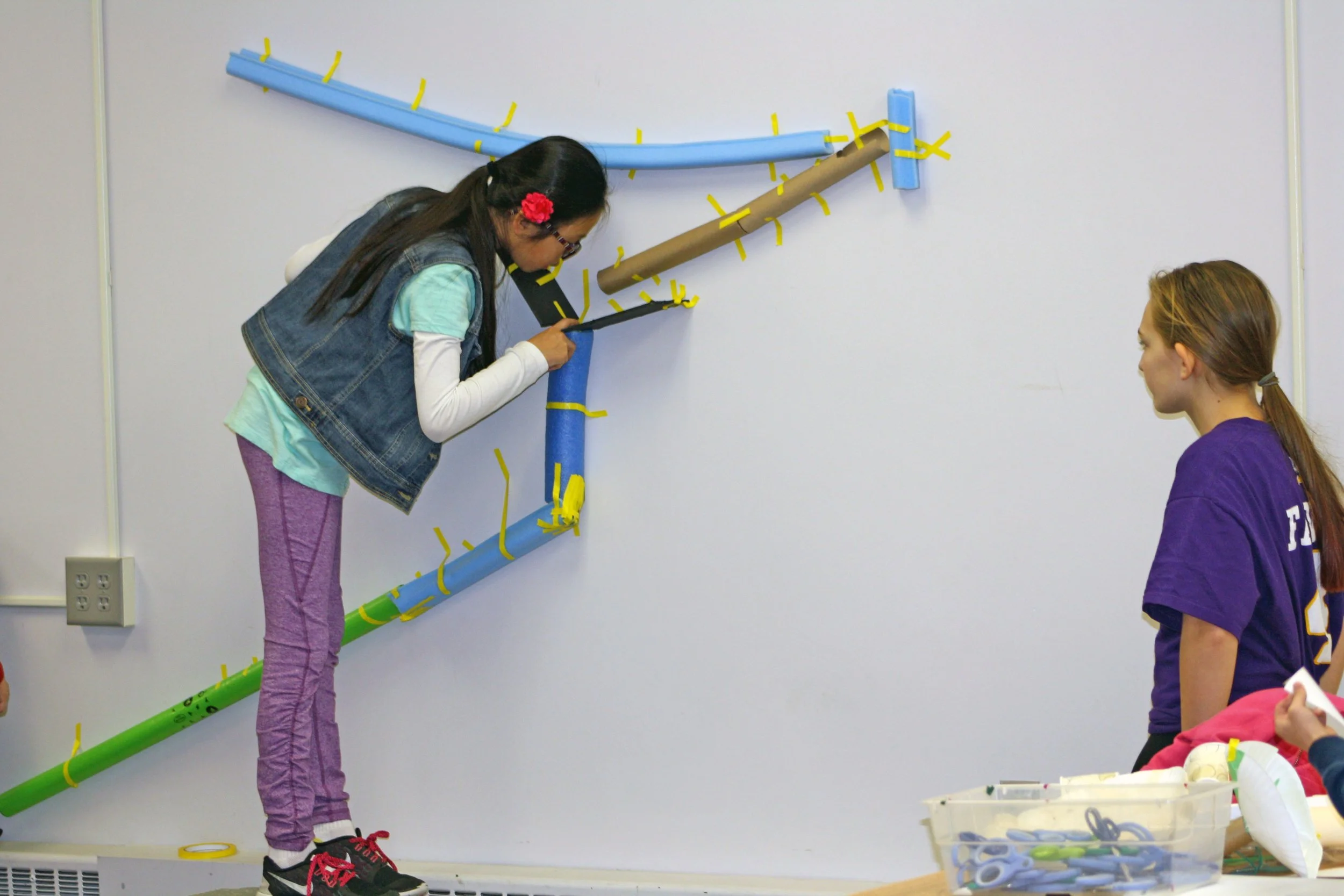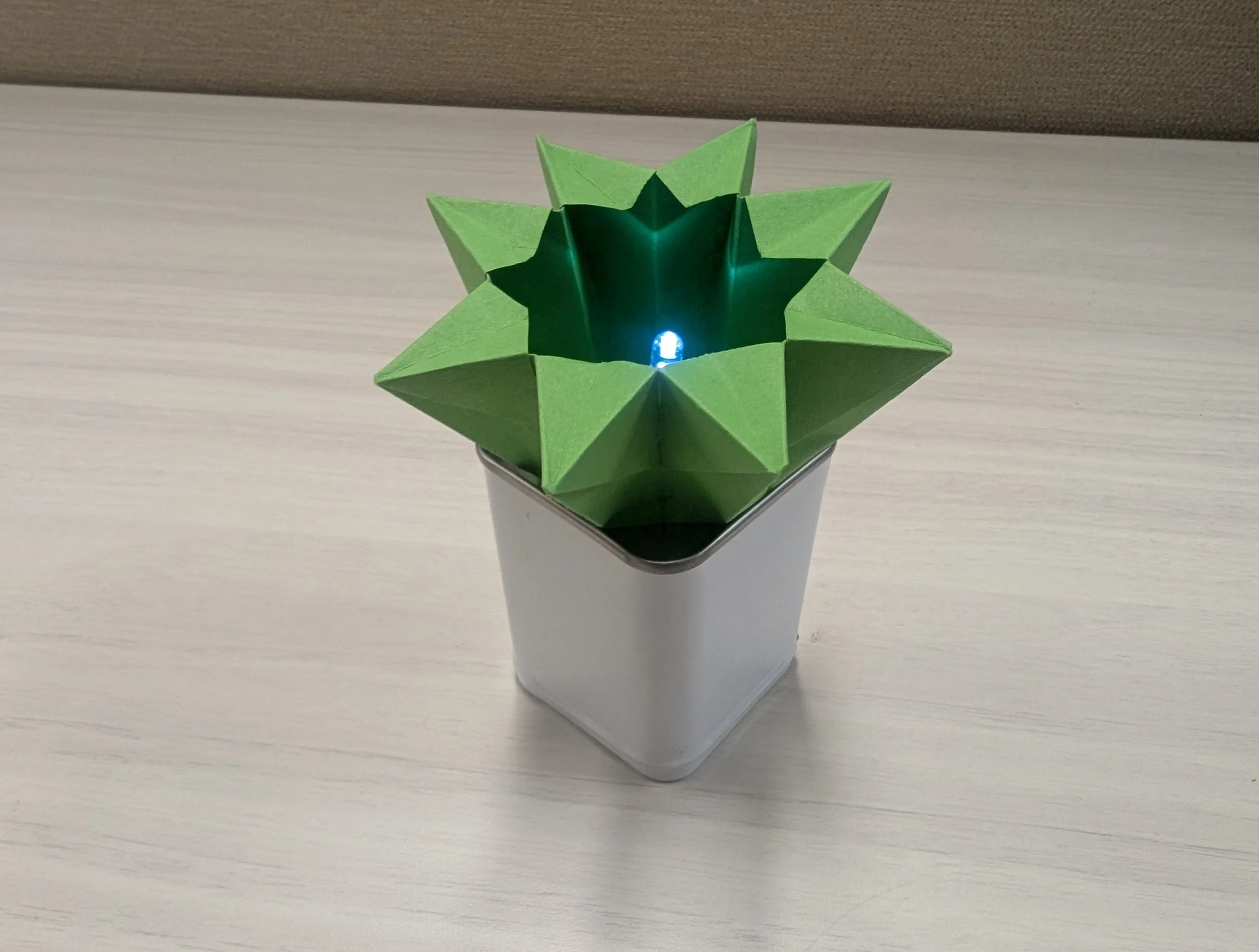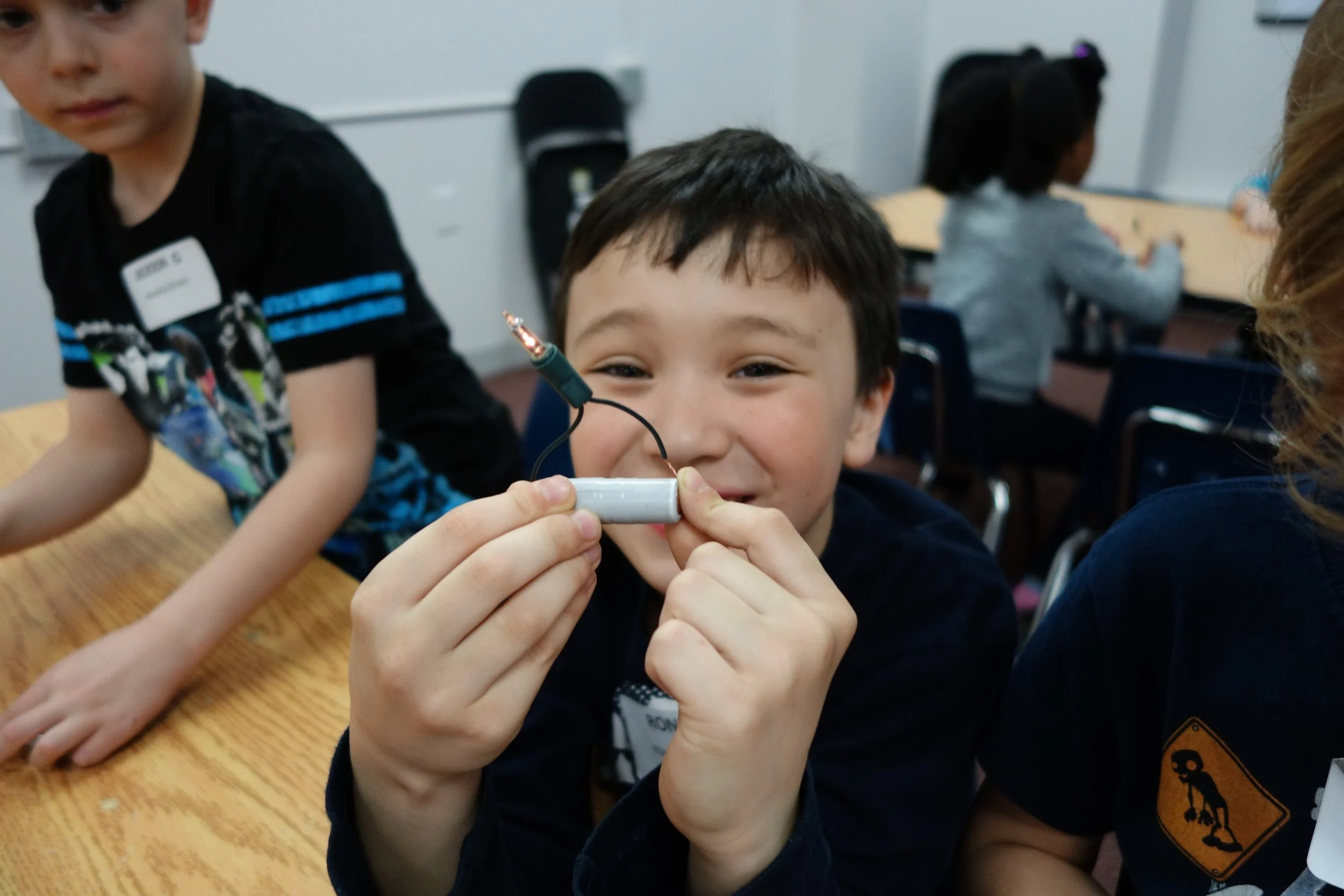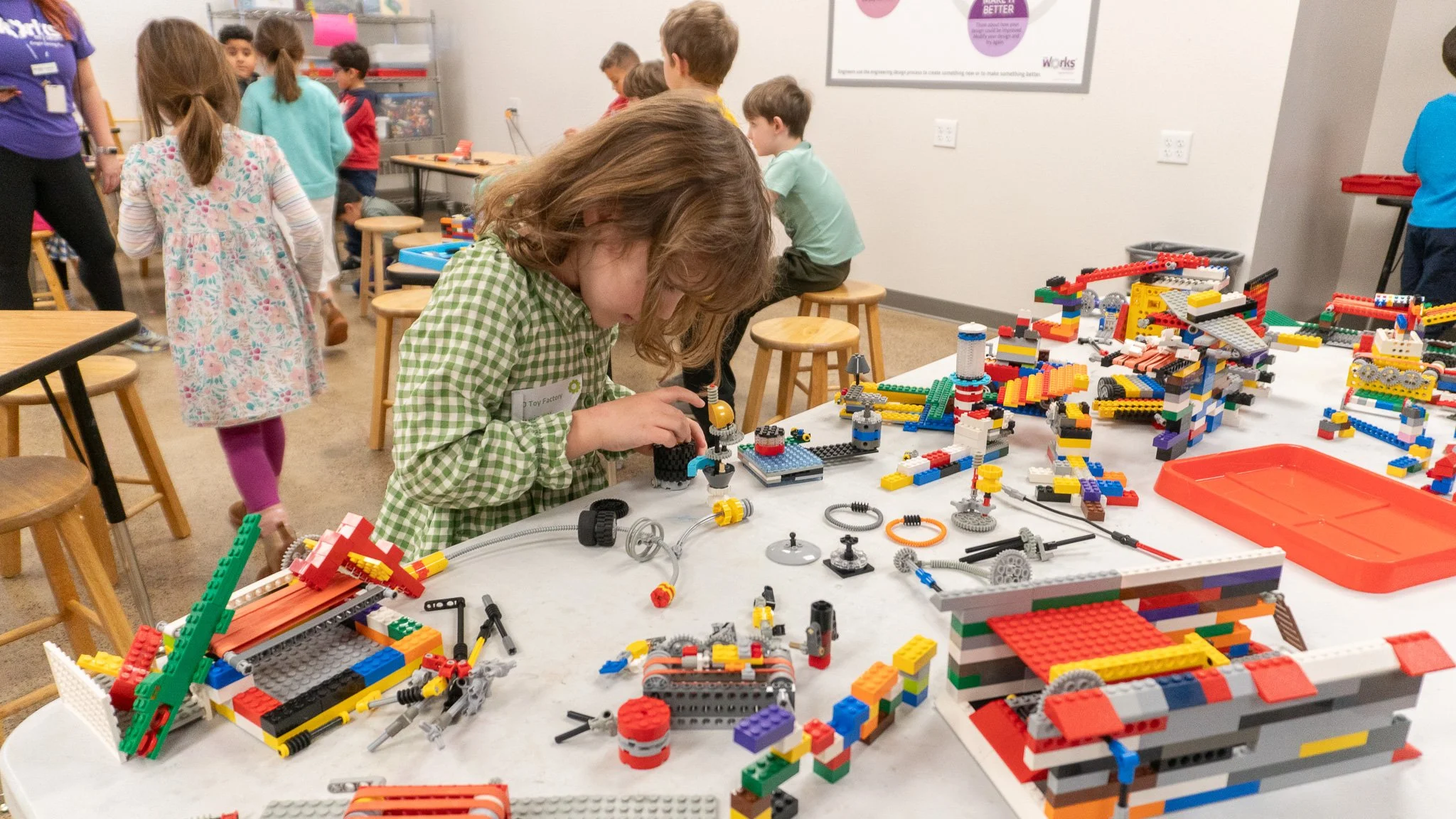Upcoming Events

Open Today + Roller Coasters & Marble Games Camp
Roller Coasters & Marble Games
9:00 am – 4:00 pm | $120 per day, $108 members
Engineer roller coasters for balls and marbles. Construct a marble maze game to take home.

Open Today + LEDgendary Design Studio Camp
LEDgendary Design Studio
9:00 am – 4:00 pm | $120 per day, $108 members
Ignite your imagination in this illuminating camp! Explore the science and art of light as you build a spinning light-up toy, craft a glowing origami lamp, and design vibrant LED artwork.


Open Today + LEGO to the Rescue Camp
LEGO to the Rescue
9:00 am – 4:00 pm | $120 per day, $108 members
Engineer creative rescue tools like ziplines, catapults, and air-powered systems to save LEGO minifigs from perilous situations. Team up and become a hero in this thrilling one-day camp!

Open Today + Math Happens
Math Happens - Drop in Activity
Play games and solve puzzles in the Shape Room with MathHappens!
11am-3pm
MathHappens Foundation supports informal, playful, and creative math learning opportunities for people of all ages. We emphasize hands-on, screen-free activities that are easy to get started with, and that reward persistence with beauty, wonder, and insight.
Math Happens activities are included with the price of admission!


Open Today + Homeschool Workshop
Homeschool Workshop – Circuit Explore
10:30 am – 11:30 am
Learn about the flow of electricity and hook up different circuits to create a light to take home.




Open Today + Math Happens
Math Happens - Drop in Activity
Play games and solve puzzles in the Shape Room with MathHappens!
11am-3pm
MathHappens Foundation supports informal, playful, and creative math learning opportunities for people of all ages. We emphasize hands-on, screen-free activities that are easy to get started with, and that reward persistence with beauty, wonder, and insight.
Math Happens activities are included with the price of admission!


Open Today + MLK Day Camp
Wizard Worlds
9:00 am – 4:00 pm | $120 per day, $108 members
Unleash your inner science wizard and create some STEM magic! Use electrical circuits to build your own light-up wand, concoct “potions” and experiment using dry ice, then learn to cast floating “spells” with static electricity and magnets.







Open Today + Math Happens
Math Happens - Drop in Activity
Play games and solve puzzles in the Shape Room with MathHappens!
11am-3pm
MathHappens Foundation supports informal, playful, and creative math learning opportunities for people of all ages. We emphasize hands-on, screen-free activities that are easy to get started with, and that reward persistence with beauty, wonder, and insight.
Math Happens activities are included with the price of admission!






Open Today + Presidents’ Day Camp
Carpentry in Motion
9:00 am – 4:00 pm | $120 per day, $108 members
Calling all young builders! Learn beginning carpentry skills and construct hands-on projects that move. Practice using hammers, saws, screwdrivers and more to build a wooden catapult and a pinewood derby-style car.

Open Today + Math Happens
Math Happens - Drop in Activity
Play games and solve puzzles in the Shape Room with MathHappens!
11am-3pm
MathHappens Foundation supports informal, playful, and creative math learning opportunities for people of all ages. We emphasize hands-on, screen-free activities that are easy to get started with, and that reward persistence with beauty, wonder, and insight.
Math Happens activities are included with the price of admission!





Open Today + Homeschool Workshop
Homeschool Workshop – Float Your Boat
10:30 am – 11:30 am
Explore buoyancy with different materials, then build your own boat. Evaluate and improve your design, just like a real engineer!

Open Today + Math Happens
Math Happens - Drop in Activity
Play games and solve puzzles in the Shape Room with MathHappens!
11am-3pm
MathHappens Foundation supports informal, playful, and creative math learning opportunities for people of all ages. We emphasize hands-on, screen-free activities that are easy to get started with, and that reward persistence with beauty, wonder, and insight.
Math Happens activities are included with the price of admission!










Open Today + Math Happens
Math Happens - Drop in Activity
Play games and solve puzzles in the Shape Room with MathHappens!
11am-3pm
MathHappens Foundation supports informal, playful, and creative math learning opportunities for people of all ages. We emphasize hands-on, screen-free activities that are easy to get started with, and that reward persistence with beauty, wonder, and insight.
Math Happens activities are included with the price of admission!











Open Today + Math Happens
Math Happens - Drop in Activity
Play games and solve puzzles in the Shape Room with MathHappens!
11am-3pm
MathHappens Foundation supports informal, playful, and creative math learning opportunities for people of all ages. We emphasize hands-on, screen-free activities that are easy to get started with, and that reward persistence with beauty, wonder, and insight.
Math Happens activities are included with the price of admission!






Open Today + Math Happens
Math Happens - Drop in Activity
Play games and solve puzzles in the Shape Room with MathHappens!
11am-3pm
MathHappens Foundation supports informal, playful, and creative math learning opportunities for people of all ages. We emphasize hands-on, screen-free activities that are easy to get started with, and that reward persistence with beauty, wonder, and insight.
Math Happens activities are included with the price of admission!






Open Today + Math Happens
Math Happens - Drop in Activity
Play games and solve puzzles in the Shape Room with MathHappens!
11am-3pm
MathHappens Foundation supports informal, playful, and creative math learning opportunities for people of all ages. We emphasize hands-on, screen-free activities that are easy to get started with, and that reward persistence with beauty, wonder, and insight.
Math Happens activities are included with the price of admission!






Open Today + Math Happens
Math Happens - Drop in Activity
Play games and solve puzzles in the Shape Room with MathHappens!
11am-3pm
MathHappens Foundation supports informal, playful, and creative math learning opportunities for people of all ages. We emphasize hands-on, screen-free activities that are easy to get started with, and that reward persistence with beauty, wonder, and insight.
Math Happens activities are included with the price of admission!











Open Today + LEGO Toy Factory Camp
LEGO Toy Factory
9:00 am – 4:00 pm | $120 per day, $108 members
Join our team of LEGO engineering enthusiasts as we complete challenges and solve problems in an imaginary toy factory. Create a conveyor belt to move items through your factory, test your structure building skills, and design a LEGO sorting tool that you get to take home!

Open Today + Cardboard Creations: Winter Village Camp
Cardboard Creations: Winter Village
9:00 am – 4:00 pm | $120 per day, $108 members
Use cardboard connecting methods to create a model of a village. Wire an electrical circuit to light up your town.


Open Today + Math Happens
Math Happens - Drop in Activity
Play games and solve puzzles in the Shape Room with MathHappens!
11am-3pm
MathHappens Foundation supports informal, playful, and creative math learning opportunities for people of all ages. We emphasize hands-on, screen-free activities that are easy to get started with, and that reward persistence with beauty, wonder, and insight.
Math Happens activities are included with the price of admission!






Open Today + Math Happens
Math Happens - Drop in Activity
Play games and solve puzzles in the Shape Room with MathHappens!
11am-3pm
MathHappens Foundation supports informal, playful, and creative math learning opportunities for people of all ages. We emphasize hands-on, screen-free activities that are easy to get started with, and that reward persistence with beauty, wonder, and insight.
Math Happens activities are included with the price of admission!












Open Today + The Design Studio Grand Opening + Math Happens
Math Happens - Drop in Activity
Play games and solve puzzles in the Shape Room with MathHappens!
11am-3pm
MathHappens Foundation supports informal, playful, and creative math learning opportunities for people of all ages. We emphasize hands-on, screen-free activities that are easy to get started with, and that reward persistence with beauty, wonder, and insight.
Math Happens activities are included with the price of admission!

















